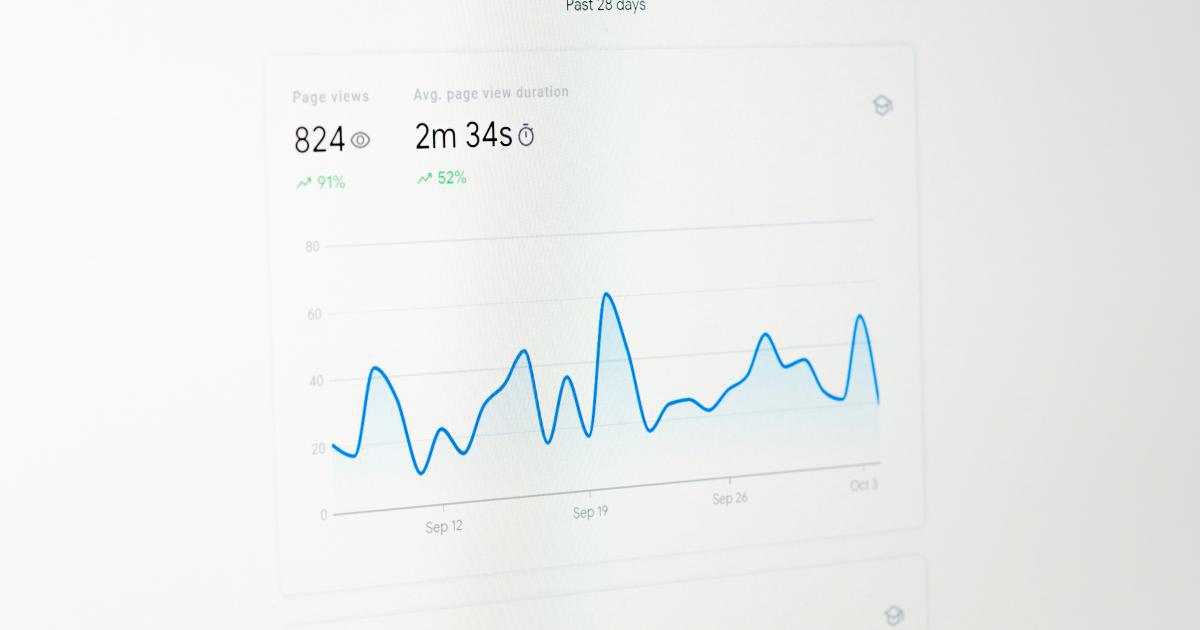Elevating Robots.txt Optimization for Better Indexability


The Significance of Robots.txt Optimization
In the ever-evolving landscape of digital marketing, the robots.txt file has become a crucial component in ensuring the optimal indexability of your website. This unassuming, yet powerful, text file plays a vital role in guiding search engine crawlers through your site's content, ultimately impacting your overall online visibility and search engine rankings.

As search engines continue to refine their algorithms and prioritize user experience, the importance of properly managing your robots.txt file has only increased. By optimizing this file, you can effectively communicate with search engine bots, directing them to the content you want indexed while shielding sensitive or unnecessary pages from their scrutiny.
Understanding the Robots.txt File
The robots.txt file is a simple text file that resides in the root directory of your website. It serves as a communication channel between your site and search engine crawlers, providing instructions on which areas of your website should be accessed (or avoided) during the indexing process.
The Anatomy of Robots.txt
The robots.txt file is structured using a specific syntax, with each directive consisting of two parts:
User-agent: This specifies the type of search engine bot or crawler to which the directive applies. Common user-agents include Googlebot, Bingbot, Yandexbot, and the generic * (which applies to all crawlers).
Directive: This tells the search engine crawler how to interact with the specified areas of your website. The most common directives are Disallow (to block access to a specific URL or directory) and Allow (to grant access to a specific URL or directory).
Here's an example of a basic robots.txt file:
User-agent: *
Disallow: /admin/
Disallow: /private/
Allow: /public/
In this example, the robots.txt file instructs all search engine crawlers (User-agent: *) to avoid the /admin/ and /private/ directories, but to allow access to the /public/ directory.
The Importance of Robots.txt Optimization
Optimizing your robots.txt file is crucial for several reasons:
Improved Indexability: By properly guiding search engine crawlers, you can ensure that your most important, high-value content is indexed and displayed in search results, while keeping sensitive or unnecessary pages out of the index.
Enhanced User Experience: Effectively managing your robots.txt file can improve the overall user experience by preventing visitors from accessing irrelevant or restricted areas of your website.
Better Search Engine Rankings: Search engines may view a well-optimized robots.txt file as a sign of a well-maintained and trustworthy website, potentially leading to improved search engine rankings.
Compliance and Security: Properly configuring your robots.txt file can also help maintain compliance with various regulations and improve the overall security of your website by limiting access to sensitive areas.

Developing a Comprehensive Robots.txt Strategy
Crafting an effective robots.txt strategy requires a methodical approach, taking into account your website's structure, content, and the evolving needs of your business. Let's explore the key steps in developing a comprehensive robots.txt optimization plan.
Audit Your Current Robots.txt File
The first step in optimizing your robots.txt file is to perform a thorough audit of your existing file. This involves carefully reviewing the current directives, ensuring they align with your website's structure and content requirements.
During the audit, consider the following:
- Completeness: Ensure that your robots.txt file covers all the necessary areas of your website, both in terms of allowing and disallowing access.
- Accuracy: Verify that the directives accurately reflect your current website structure and content hierarchy.
- Consistency: Ensure that your robots.txt file is consistent across all your website's subdomains and mirrors.

Identify Content Priorities
Before optimizing your robots.txt file, it's crucial to have a clear understanding of your website's content priorities. Determine which pages or sections are the most important for your business and should be prioritized for indexing by search engines.
Consider the following factors when identifying your content priorities:
- Revenue-generating pages: Ensure that any pages directly contributing to your revenue stream, such as product pages or checkout pages, are properly indexed.
- High-value informational content: Identify and prioritize pages that provide valuable, engaging content to your users, such as blog posts, tutorials, or resource hubs.
- Secondary content: Determine which pages or sections are less critical, such as administrative pages, test environments, or deprecated content, and consider excluding them from indexing.

Craft Optimized Robots.txt Directives
With a clear understanding of your website's content priorities, you can now begin crafting optimized robots.txt directives. This process involves carefully balancing the need to grant access to your most important content while restricting access to sensitive or unnecessary pages.
When developing your robots.txt directives, consider the following best practices:
Use Specific Directives: Rather than relying on broad, catchall directives, aim to use specific, targeted directives that address the unique needs of your website.
Prioritize Accessibility: Ensure that your most important, revenue-generating, and high-value content is easily accessible to search engine crawlers.
Restrict Sensitive Areas: Identify and block access to any sensitive or unnecessary areas of your website, such as administrative panels, staging environments, or outdated content.
Leverage Wildcards Judiciously: While wildcards (e.g., Disallow: /admin/*) can be useful for broader restrictions, be cautious not to over-rely on them, as they may inadvertently block important content.
Test and Validate: Thoroughly test your robots.txt directives to ensure they are functioning as intended, and validate the file using online tools to identify any potential issues.

Implement and Monitor Your Robots.txt File
Once you've crafted your optimized robots.txt directives, it's time to implement them on your website. This process typically involves the following steps:
Update the Robots.txt File: Make the necessary changes to your robots.txt file, ensuring that the new directives are properly formatted and aligned with your content priorities.
Deploy the Updated File: Upload the updated robots.txt file to the root directory of your website, replacing the existing file (if any).
Monitor and Adjust: Continuously monitor the performance and impact of your robots.txt file, making adjustments as needed to adapt to changes in your website's content or business requirements.

Regular monitoring and adjustment of your robots.txt file is crucial, as your website's content and structure may evolve over time. By continuously reviewing and refining your robots.txt directives, you can ensure that your website remains optimized for indexability and user experience.
Advanced Robots.txt Optimization Techniques
While the basic principles of robots.txt optimization are essential, there are also some advanced techniques that can help you take your optimization efforts to the next level.
Conditional Directives
One powerful technique is the use of conditional directives, which allow you to apply different rules based on specific conditions or user-agent characteristics. This can be especially useful for complex websites with diverse content requirements.
Here's an example of a conditional directive:
User-agent: Googlebot
Disallow: /admin/
User-agent: Bingbot
Allow: /public/
In this example, the robots.txt file instructs Googlebot to avoid the /admin/ directory, while allowing Bingbot access to the /public/ directory.
Sitemap Integration
Another advanced technique is to integrate your robots.txt file with your website's sitemap. By including a directive that points to your sitemap, you can provide search engines with a comprehensive roadmap of your website's content, further enhancing their ability to effectively index your pages.
Sitemap: https://example.com/sitemap.xml
Customized Error Handling
In some cases, you may want to provide customized error messages or redirect instructions for specific directives. This can be achieved by using the Disallow: directive in combination with the $ character, which represents the end of the URL path.
User-agent: *
Disallow: /admin$
Disallow: /admin/$ [D:\DL\401.html]
In this example, the first directive blocks access to the /admin directory, while the second directive blocks access to the /admin/ directory and provides a custom error message by redirecting to the 401.html file.
Advanced Syntax and Directives
Beyond the basic Disallow and Allow directives, the robots.txt syntax also supports more advanced options, such as:
-
Crawl-delay:Specifying the time (in seconds) that search engine crawlers should wait between requests. -
Host:Providing a canonical host name for your website, which can help prevent duplicate content issues. -
Noindex:Instructing search engines not to index a specific page or directory.
By exploring these advanced techniques, you can fine-tune your robots.txt file to better align with your website's unique needs and requirements.

Measuring the Impact of Robots.txt Optimization
Evaluating the effectiveness of your robots.txt optimization efforts is crucial for ensuring the long-term success of your strategy. By monitoring key metrics and analyzing the impact of your changes, you can make informed decisions and continuously refine your approach.
Tracking Indexability Metrics
One of the primary ways to measure the impact of your robots.txt optimization is to track the indexability of your website's content. This can be done by monitoring metrics such as:
- Pages Indexed: The number of pages from your website that are currently indexed by search engines.
- Crawl Errors: The number of crawl errors (such as 404 or 500 errors) reported by search engines.
- Crawl Budget: The amount of time and resources search engines are willing to allocate to crawling your website.
By closely monitoring these metrics, you can identify any potential issues or areas for improvement in your robots.txt optimization strategy.

Analyzing Search Engine Performance
In addition to tracking indexability, it's also important to monitor the impact of your robots.txt optimization on your website's overall search engine performance. Key metrics to consider include:
- Search Engine Rankings: Observe any changes in your website's rankings for specific keywords or search queries.
- Organic Traffic: Analyze the changes in the volume and quality of organic traffic to your website.
- Conversion Rates: Examine the impact of your robots.txt optimization on the conversion rates of your most important pages.
By analyzing these metrics, you can gain valuable insights into how your robots.txt optimization is affecting your website's visibility and performance in search engine results.

Continuous Optimization and Refinement
Effective robots.txt optimization is an ongoing process, as your website's content and structure are likely to evolve over time. By continuously monitoring and refining your robots.txt file, you can ensure that it remains aligned with your business goals and user needs.
Remember to:
- Regularly Review and Update: Periodically review your robots.txt file and make any necessary changes to accommodate new content or site structure.
- Utilize Analytical Tools: Leverage a range of analytical tools, such as Google Search Console, to gain deeper insights into the performance of your robots.txt file.
- Collaborate with Stakeholders: Engage with relevant stakeholders, such as your SEO team or content managers, to ensure that your robots.txt optimization strategy remains in sync with your overall digital marketing efforts.
By embracing a continuous optimization approach, you can adaptively manage your robots.txt file and maintain a strong, search-engine-friendly online presence.

Conclusion
In the ever-evolving world of digital marketing, the robots.txt file has emerged as a crucial component in ensuring the optimal indexability and visibility of your website. By developing a comprehensive robots.txt optimization strategy, you can effectively communicate with search engine crawlers, guiding them to your most valuable content while restricting access to sensitive or unnecessary areas.
Throughout this article, we've explored the significance of robots.txt optimization, the key steps in developing a comprehensive strategy, and the advanced techniques that can take your efforts to the next level. By following these best practices and continuously monitoring the impact of your optimizations, you can unlock the full potential of your website's indexability and elevate your search engine performance.
Embrace the power of robots.txt optimization and unlock the door to greater online success.